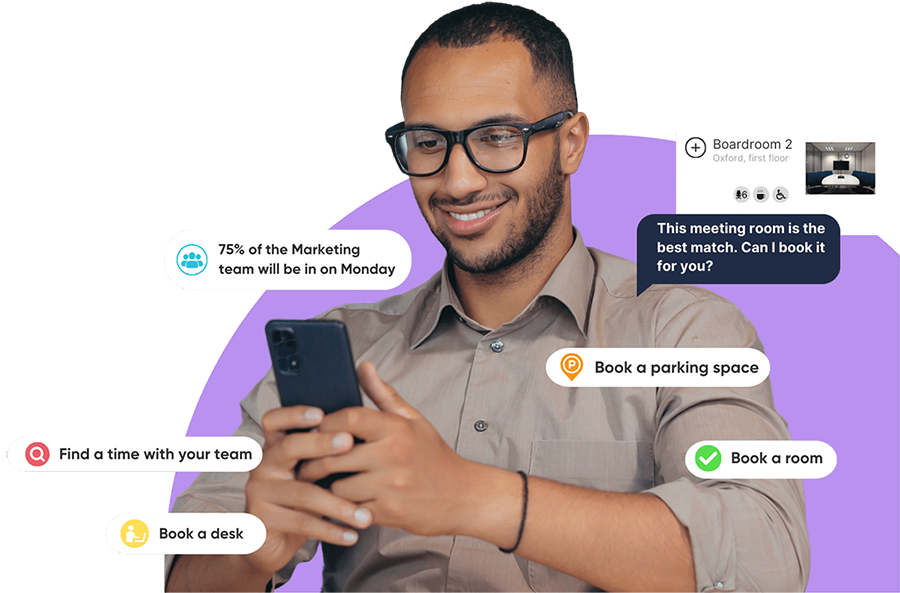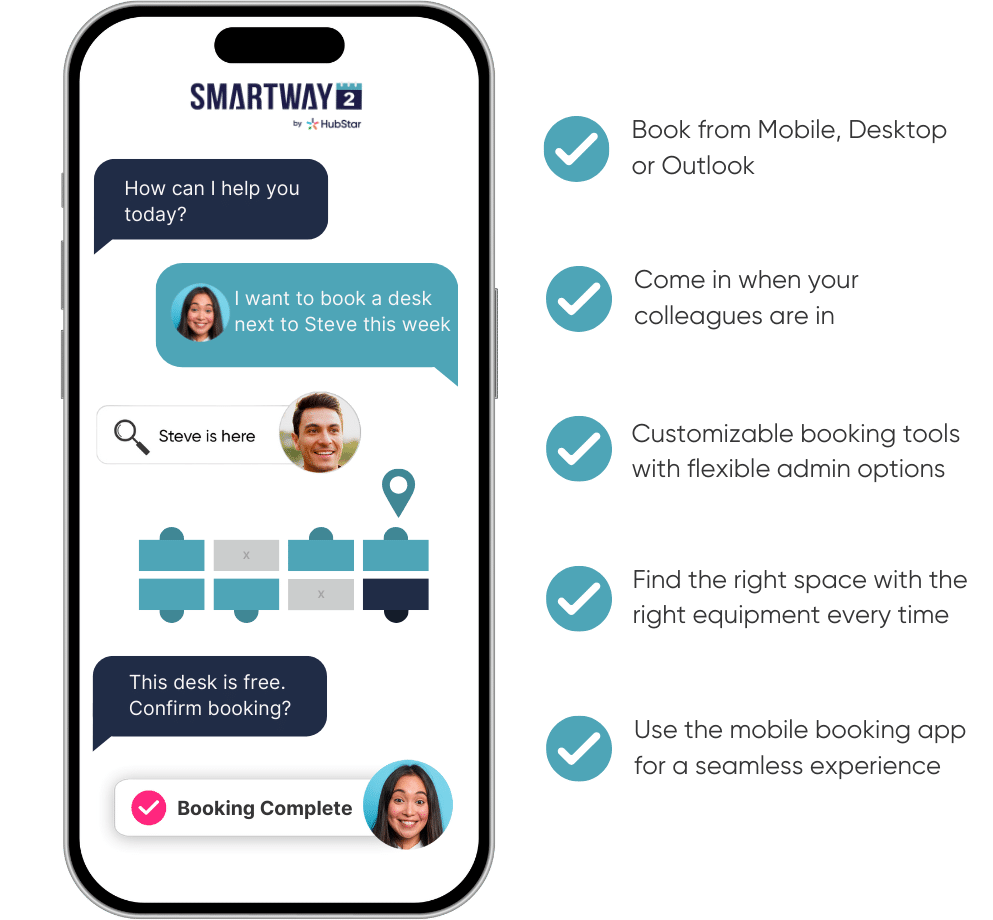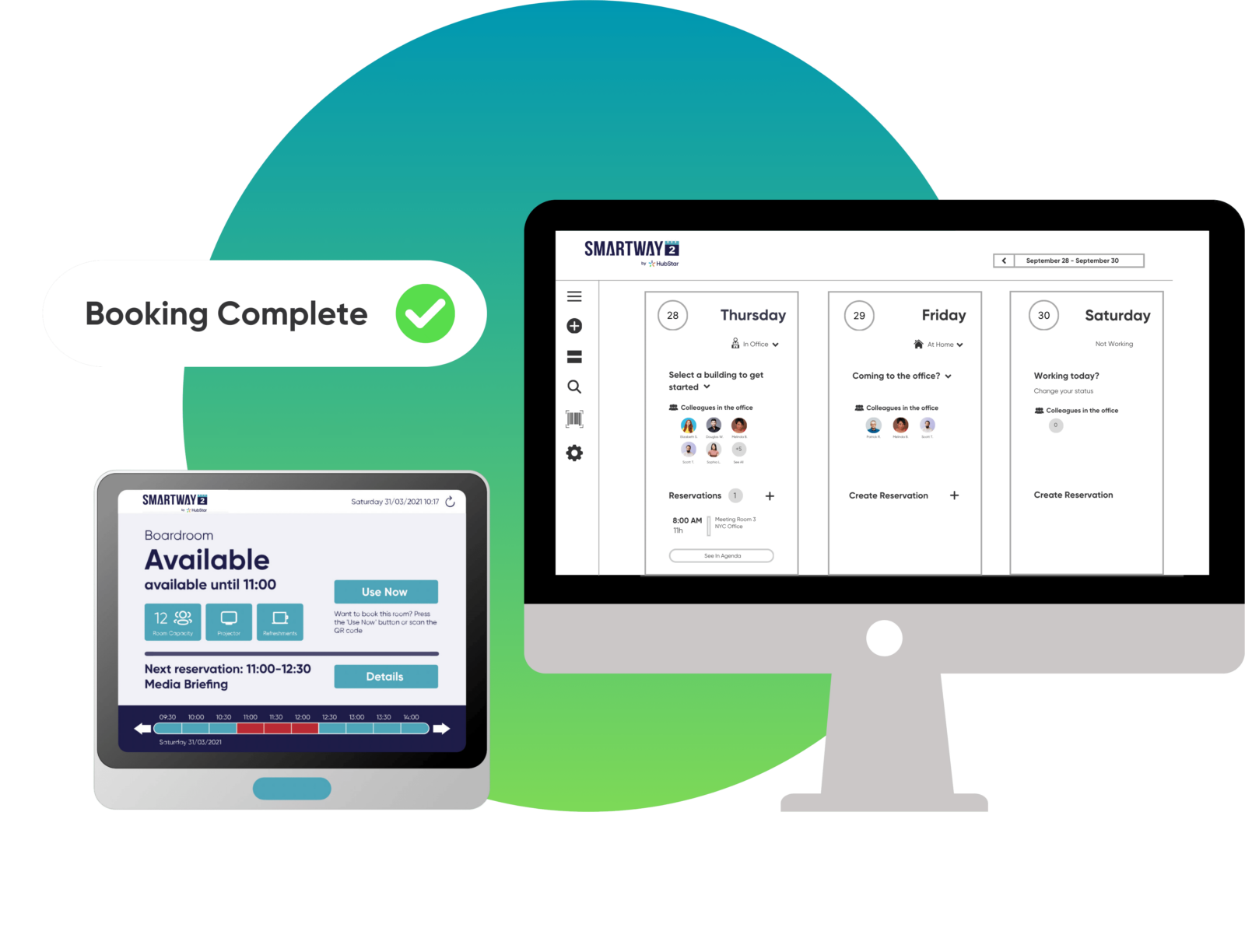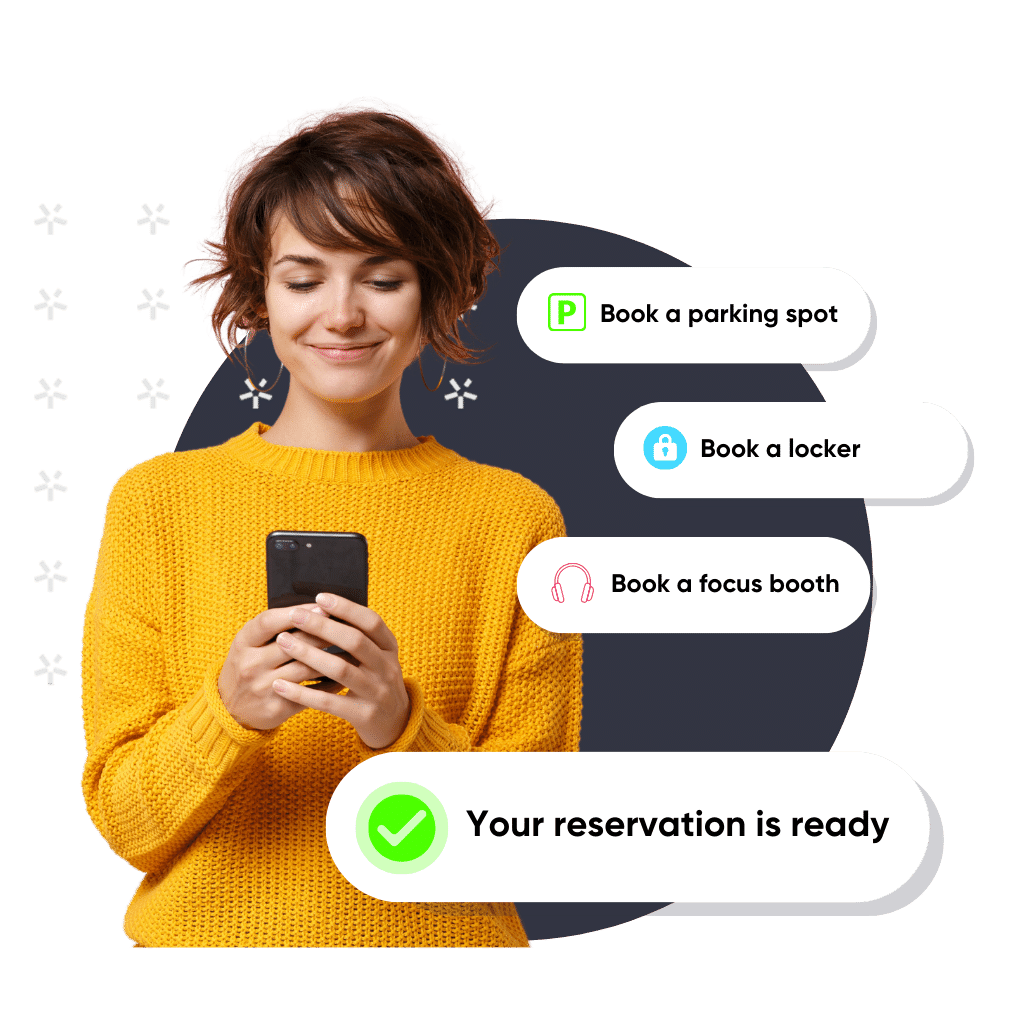Download Case Study: A Russell Group University
Find out how this Russell Group University’s Office of Development and Alumni Relations is using Smartway2’s workplace scheduling software to develop and implement their hybrid work policy.


Give everyone a reason to come together, with HubStar Connect.

So easy it won’t feel like booking.
Smartway2 matches employees with the right desk for whatever’s on their to-do list that day.

No more last-minute meeting room scrambles.
With Smartway2, you’ll always find the meeting rooms where your team’s best work happens.

Parking spots, lockers, sleeping pods and more.
Make every resource bookable with Smartway2 and give employees a workplace experience that keeps them coming back.

to help you transform your workplace